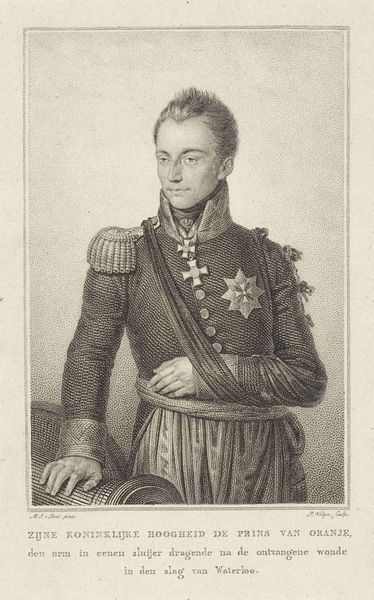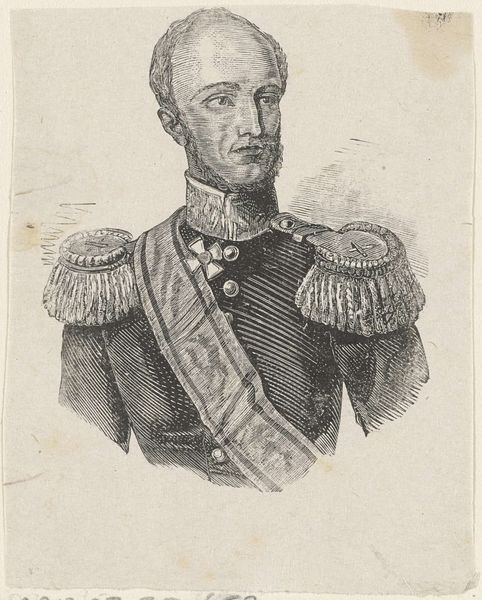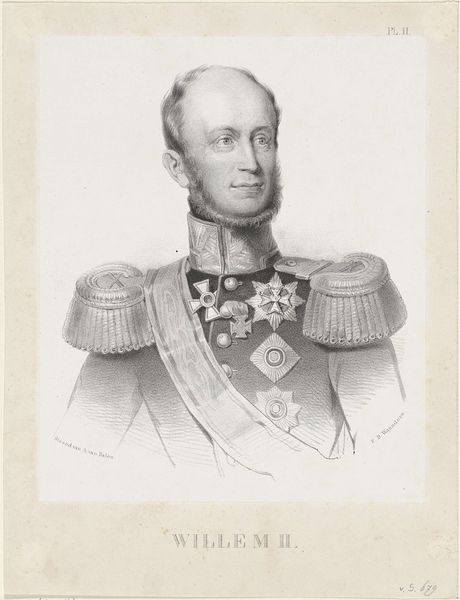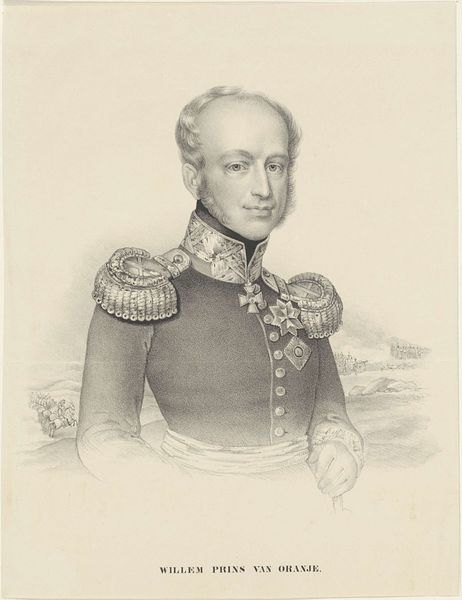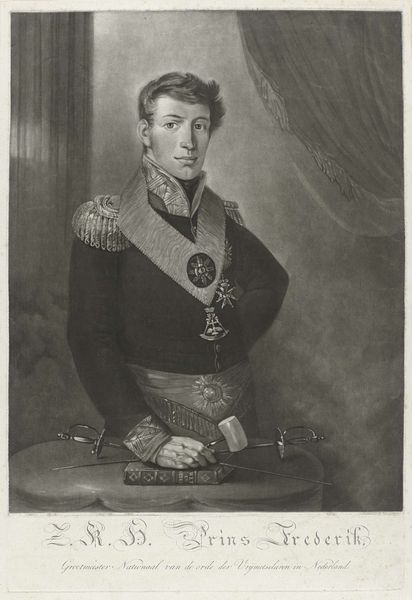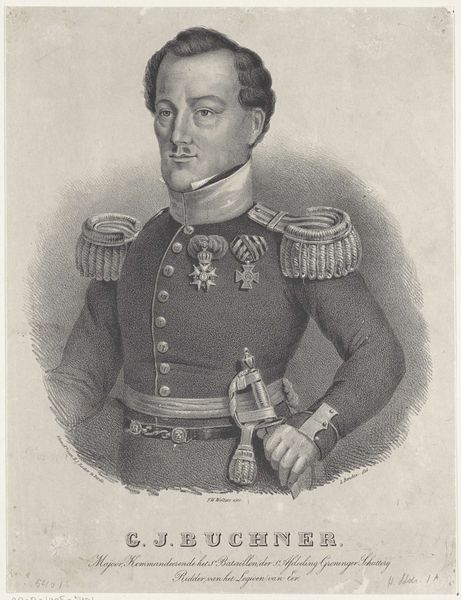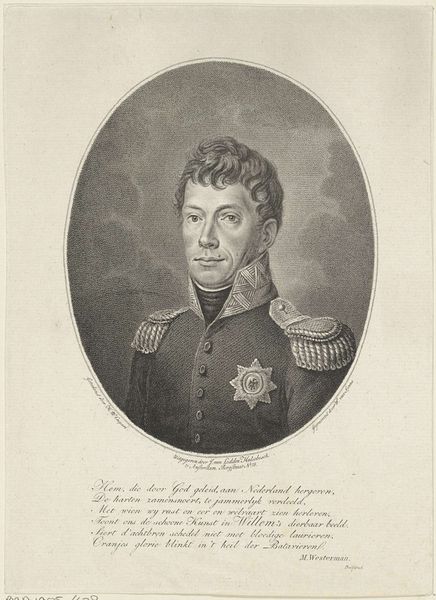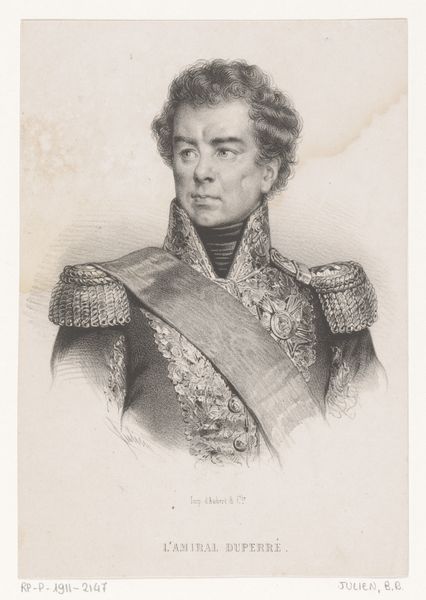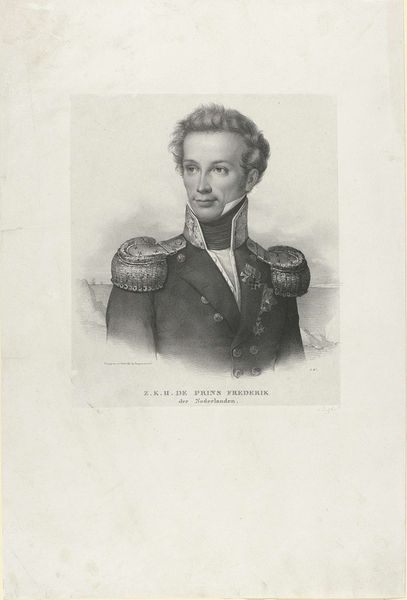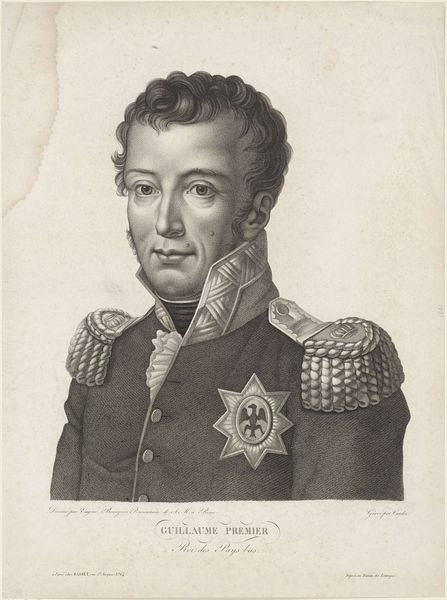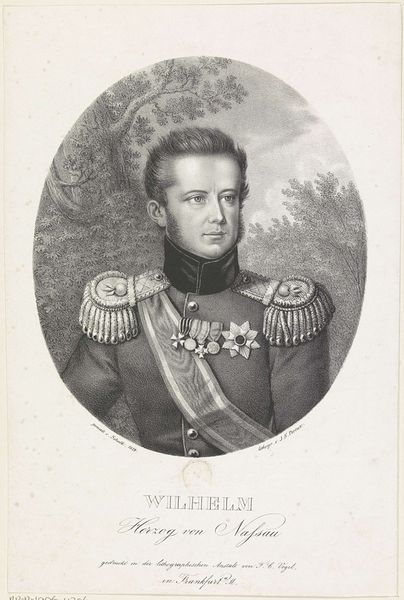
drawing, pencil
#
portrait
#
pencil drawn
#
drawing
#
pencil sketch
#
historical photography
#
pencil drawing
#
pencil
#
19th century
#
portrait drawing
#
history-painting
Dimensions: height 404 mm, width 256 mm
Copyright: Rijks Museum: Open Domain
Curator: This pencil drawing, entitled "Portret van koning Willem II," dates roughly from 1815 to 1866 and portrays King Willem II of the Netherlands. Editor: My first impression is one of formality, even austerity. The stark monochromatic palette and the subject's severe gaze project an air of unyielding authority. He seems distant. Curator: Absolutely. Consider the sociopolitical context: Willem II's reign occurred during a period of significant upheaval in Europe. This image speaks volumes about constructed identity, particularly masculinity and power, during this era. Note the deliberate symbolism within the attire—the medals, the uniform itself—which reinforces narratives of strength and national identity. How might feminist theory challenge the representation of masculinity presented here? Editor: From a materialist perspective, it’s interesting to note the choice of pencil as a medium for portraying someone of such status. Pencil drawings were often used for studies or preparatory sketches. The relative accessibility of pencil, compared to, say, oil paints, perhaps allows for a broader engagement with the king's image. I wonder, were these portraits made for wider distribution, making images of the elite more publicly available and reproducible? What sort of labor was involved? Curator: The mass production is certainly an avenue for consideration, connecting it to notions of public perception and perhaps, political propaganda. How the artist's labor intersects with broader social movements might unveil tensions related to class and representation during this period. Who had access to portrayals like this? How were they consumed, and what discourses did they perpetuate or challenge? Editor: Thinking about consumption, consider the cannon shown to the side. The inclusion is powerful as it makes clear the material sources of authority, namely military. And that’s all present within the confines of a rather humble artistic material: pencil. It's almost paradoxical. Curator: Exactly. This portrait exists not merely as a depiction of royalty, but as a materialization of intersecting historical, political, and artistic forces. A lens into constructions of power and representation that reverberate even today. Editor: Yes, seeing art with attention to material conditions and the power relations they imply helps us understand these legacies much better.
Comments
No comments
Be the first to comment and join the conversation on the ultimate creative platform.
